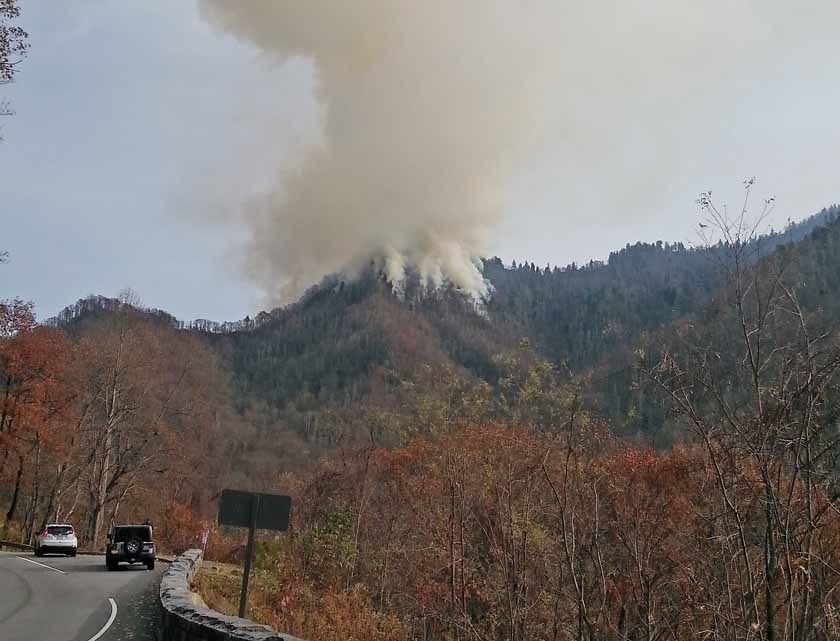A former Type 1 Incident Commander will lead a team that will conduct a review of the Chimney Tops 2 Fire that started in the Great Smoky Mountains National Park on November 23, 2016. After growing to dozens of acres over five days the fire was pushed by very strong winds out of the park into Gatlinburg, Tennessee where it killed 14 people and destroyed 2,013 homes and 53 commercial structures. It eventually burned over 17,000 acres in and outside the park.

The purpose of the review is to identify the facts leading up to and during the Chimney Tops 2 fire within the boundaries of Great Smoky Mountains National Park, as well as make recommendations on any planning, operational, or managerial issues which can be addressed locally, regionally, and/or nationally to reduce the chances of a similar incident in the future.
Joe Stutler, a former Type 1 Incident Commander and now a senior advisor for Deschutes County, Oregon, will lead the interagency team.
Other members include:
- Fire Behavior Specialist: William Grauel, Bureau of Indian Affairs – National Fire Ecologist, Boise, ID
- Municipal Fire Department Representative: Jimmy Isaacs, Boone Fire Department – Chief, Boone, NC
- Fire Operations/Risk Management Specialist: Shane Greer, U.S. Forest Service – Assistant Fire Director-Risk Management, Region 2, Golden, CO
- NPS Fire Management Officer: Mike Lewelling, Rocky Mountain National Park – Fire Management Officer, Estes Park, CO
- Fire Operations/Risk Management Specialist/Writer/Editor: Miranda Stuart, NPS Branch of Wildland Fire – Fire Management Specialist, Crawfordville, FL
- NPS Management Liaison: Tim Reid, National Park Service – Superintendent, Devils Tower National Monument, WY
The work of the review team is expected to take up 59 days according to information released by the National Park Service. After that, the team will submit their report to Bill Kaage, Division Chief of Fire and Aviation for the NPS, for review prior to it being made public.









